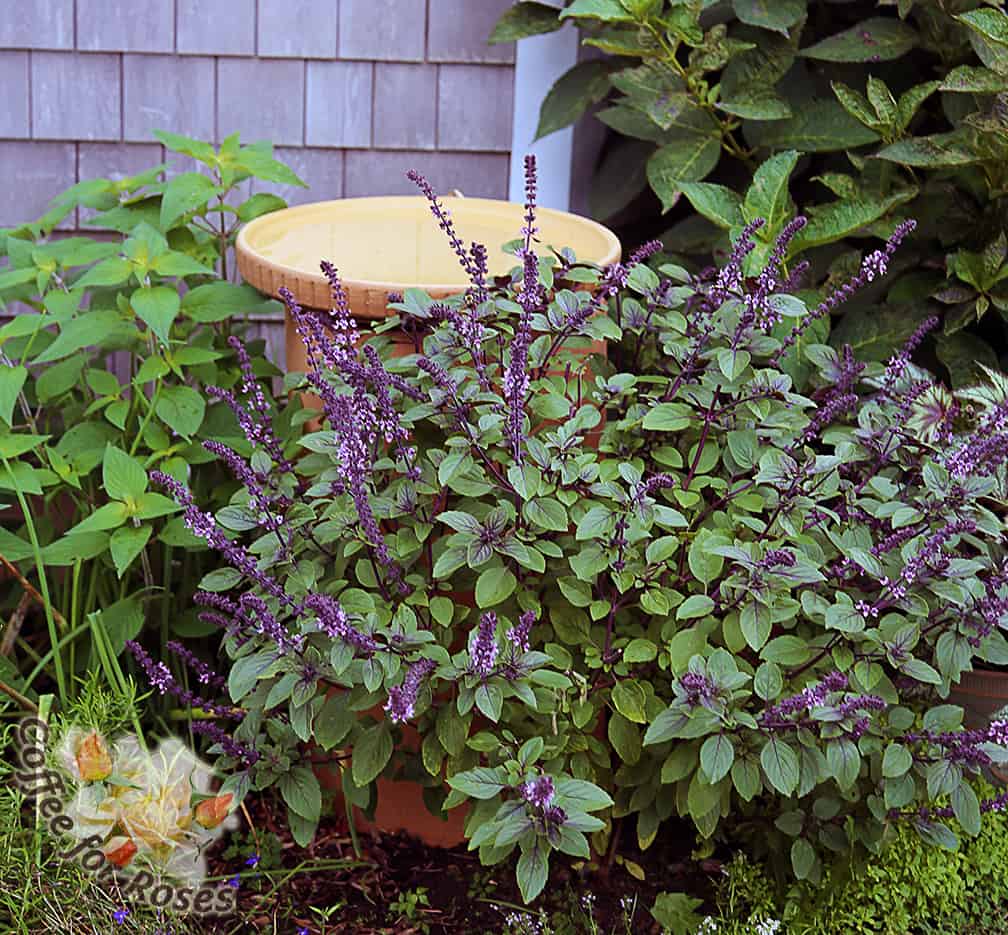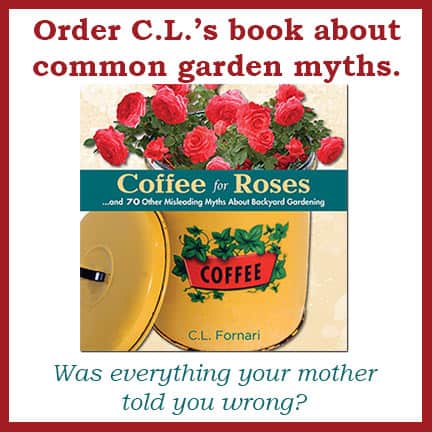I’m making plans for the coming year’s gardens and African Blue Basil is going to have a starring role. I’m not sure if I’ll be planting this in the fragrance garden, the front entry garden, Annual Alley or throughout the vegetable garden, but I do know that I’m going to feature this lovely plant in a major way. Why? Here’s what’s great about African blue basil, aka Ocimum kilimandscharicum x basilicum “Dark Opal.”
As you can tell from the name, this plant is a cross between two other basils. Peter Borchard, owner of Companion Plants in Athens, Ohio, found seedlings growing near the two parent plants, East African basil and a garden basilicum called Dark Opal. Fortunately he saved some plants and took cuttings because this plant doesn’t go to seed.
Last summer when our usual basil crop got basil downy mildew we ended up using the leaves from our African blue basil plant since it was not effected. Although the flavor is a bit stronger and slightly different from the Italian basil, it makes a good substitute on garden tomatoes and in pesto. But what won my heart was how beautiful the plants were, and how the bees loved the flowers. This basil is worth growing for its ornamental as well as the culinary values.
My plan is to buy two or three plants early on, pot them immediately into larger pots and put them in my seed-starting shed where it’s nice and warm even in early May. Then I hope to take cuttings within a couple of weeks so that I can have several plants to put in the garden in early June.

Deep purple stems, blue-green leaves and purple and lavender flowers. I pinched this plant a couple of times early in the season but after that left the flowers to bloom. Wouldn’t this be stunning when combined with a white flowing perennial such as Echinacea ‘Milkshake’? It would also be wonderful growing behind yellow blooming coreopsis, or with apricot Profusion zinnias…just dreaming of the possible combinations helps to push winter away.



